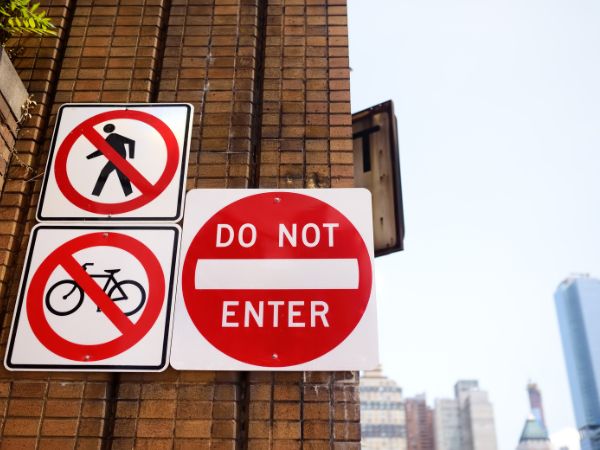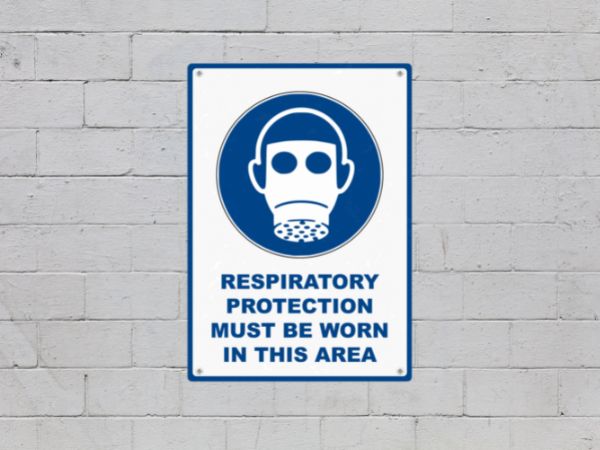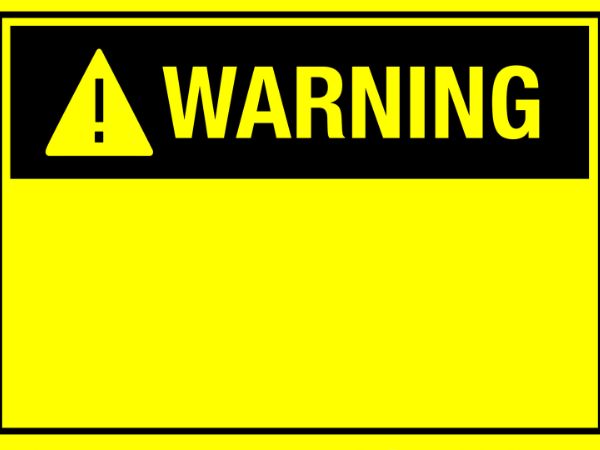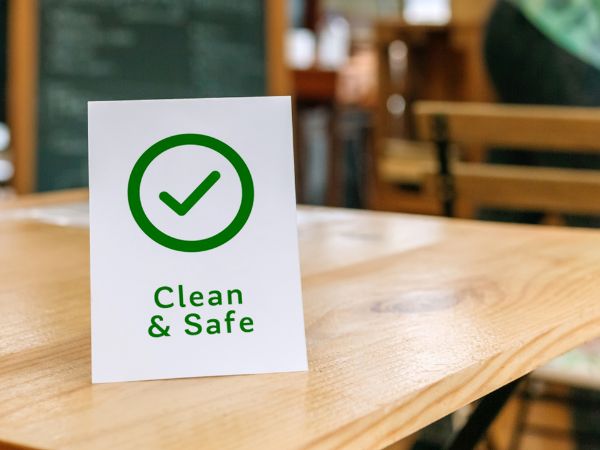Understanding Construction Site Safety Signs
Understanding Construction Site Safety Signs
When you are on a construction site, you will notice many different signs advertising different risks on the job and making you aware of any potential dangers. Each sign has its own special colors and symbols, so if you are not familiar with all of the different types of signs, it may feel like trying to learn another language! Read on to learn more about how to understand the variety of construction site safety signs that you may come across.
The Importance of Understanding Construction Safety Signs
You may be wondering why it is so important to be able to understand all of the different construction safety signs anyway. Understanding safety signs can be the difference between staying safe or getting injured on the job. It’s as simple as that! Construction safety signs are designed to clearly communicate health and safety messages and deliver important information, such as hazards to watch out for or requirements that must be obeyed. All construction safety signs must conform to the standards of the Health and Safety Regulations, which makes them universally understood.
Sign Categories
There are 5 categories of safety signs for construction, and each sign has its own set of symbols and colors. This makes it easy to take a quick look at a sign and know what information it is trying to get across. Read on to learn about each type of safety sign.
Prohibition Signs
Even those who do not work in construction are likely going to be able to recognize the prohibition sign. These are common in other areas as well– not just on construction sites. They are usually placed at the entrance to construction sites or other unsafe areas to keep people out. Sometimes they will include a person that is crossed out by the safety symbol, while other times, they are just marked by the safety symbol itself. Prohibition signs, as can be gleaned from the name, are meant to prohibit people from a certain action. For example, “no smoking” signs or “no entry” signs are both prohibition signs.

Mandatory Signs
Mandatory signs, on the other hand, are the inverse of prohibition signs. They are opposites. While a prohibition sign is trying to dissuade you from a course of action, a mandatory sign is communicating necessary actions on a job site. They tell you what you must do, rather than what you cannot. Some examples that can be found throughout a construction site are signs that say “eye protection must be worn” or “hard hats required” in particular areas. These are labeled with a blue safety symbol and may also depict a symbol in white of the protective gear that is required by the sign.

Warning Signs
Warning signs do not tell you what you cannot do, and neither do they tell you what you must do. Instead, these signs serve to inform you of any dangers or hazards on the construction site or in a specific area of the site. These are often set up by the entrance of a work site, too, like prohibition signs, with messages along the lines of “Warning: Construction Site”. Therefore, these signs can be useful for pedestrians, too, as well as construction workers. Some of the warning signs you see at work may be calling out hazards such as high voltage, work overhead, or asbestos.

Safe Condition Signs
Just as mandatory signs are the opposite of prohibition signs, safe condition signs are the opposite of warning signs. Instead of warning you against a hazard or risk on the job, safe condition signs function to alert you to safe places on the job. For instance, these could be showing you fire exits or where the first aid kit is. They may also show you who to report to in some cases.

Fire Fighting Equipment Signs
The last of the 5 sign categories is fire fighting equipment signs. As can be guessed from the name, these signs are designed to clearly label and alert you to where the fire safety equipment is. This can include but is not limited to, the mandatory fire hydrants in a space. Fire call points are also labelled by this type of sign.

Safety Symbols
As mentioned above, each category of safety sign has its own safety symbol and colour scheme. This helps to make a sign readable at a glance, even if you are too far away to read the letters– or are glancing at it too quickly to read! Take a look below to learn about the safety symbol for each category of the sign.
Prohibition Sign Symbol
The prohibition sign is easy to identify because it is bright red, which catches your eye. The safety symbol for this sign is always a red circle with a slash or crossbar through it– sometimes it is labelled with text as well, and sometimes it is not. If the prohibition sign does include text, the lettering is always black. Sometimes, symbols are included within the circle of the safety symbol, too, so that it looks like they are crossed out and makes it clear what is being prohibited. Think of the symbol of a cigarette on a “no smoking” sign. This is a great example!
Mandatory Sign Symbol
The mandatory sign has its own colour and symbol, too. It is easily recognizable by a solid blue circle. If there is any lettering or text included on the sign, this will be white. Like the prohibition sign, it will often include another symbol in addition to the blue circle to depict what is being communicated as mandatory. This second symbol will be white and is usually placed on top of the blue circle for the mandatory sign. For instance, if the sign is saying that high vis gear is required, a symbol of a vest will typically be placed on the blue mandatory symbol.
Warning Sign Symbol
The symbol for the warning signs is one that many non-construction workers will be able to pick out, too, because this is one of the more common signs and symbols. Warning sign symbols are yellow triangles bordered in black. Any text on the sign will be black as well. Think of the colour scheme of a wet floor sign! This is also black and yellow, so this colour scheme is associated with a warning in most people’s brains, even subconsciously. Sometimes, you may see a black symbol on the triangle that illustrates the particular risk or warning that the sign is pointing out.
Safe Condition Sign Symbol
Safe conditions signs are not as commonly seen– or at least, not as noticed as the prohibition or warning signs with their bright, attention-grabbing colours. Safe condition signs are green, and the symbols and text that they are labelled with are always white. The symbol or the shape of the sign itself can vary slightly. They are either oblong and rectangular or can be square, too. These signs may be placed high up, above fire exits, so sometimes the oblong shape is more conducive to the space that is available.
Fire Fighting Equipment Sign Symbol
Like the safe condition signs, fire fighting equipment signs and symbols are also either rectangular or square. They are signified by the colour red, so this combination of colour and shape– which are pulled from the prohibition and safe condition signs– denotes fire fighting equipment. Any text or symbols for this type of sign will be white. Often, the symbol for a fire hydrant will be clearly marked on the sign so that it is easy to find in an emergency situation.
Frequently Asked Questions
What are the 5 safety symbols?
There are 5 main safety symbols for signage. Prohibition signs are marked with a red circle with a slash through the middle, while mandatory signs feature a blue circle with white symbols or lettering. Warning signs are marked by a yellow triangle with a black border and lettering, and safe condition signs are symbolized by a green square or rectangle, also with white lettering. The fire equipment symbol is a red square or rectangle.
What are the 5 categories of signs?
The five categories of signs are prohibition signs, mandatory signs, warning signs, safe condition signs, and fire equipment signs. Each sign has a special corresponding symbol as well, so even if you are unable to read the lettering on the sign, you are still able to understand the sign’s intentions and what it is trying to communicate.
What signage is required by OSHA?
OSHA has several rules about signs, including how far away a sign must be able to be read (at least five feet away) and what colours and symbols should be used for what kinds of signs. It is important that any hazards are marked by signage that falls under one of the 5 categories of signs. Some of the signs that OSHA requires you to put up are danger signs, warning signs, and caution signs, all properly corresponding with whatever area or object is being labelled.
